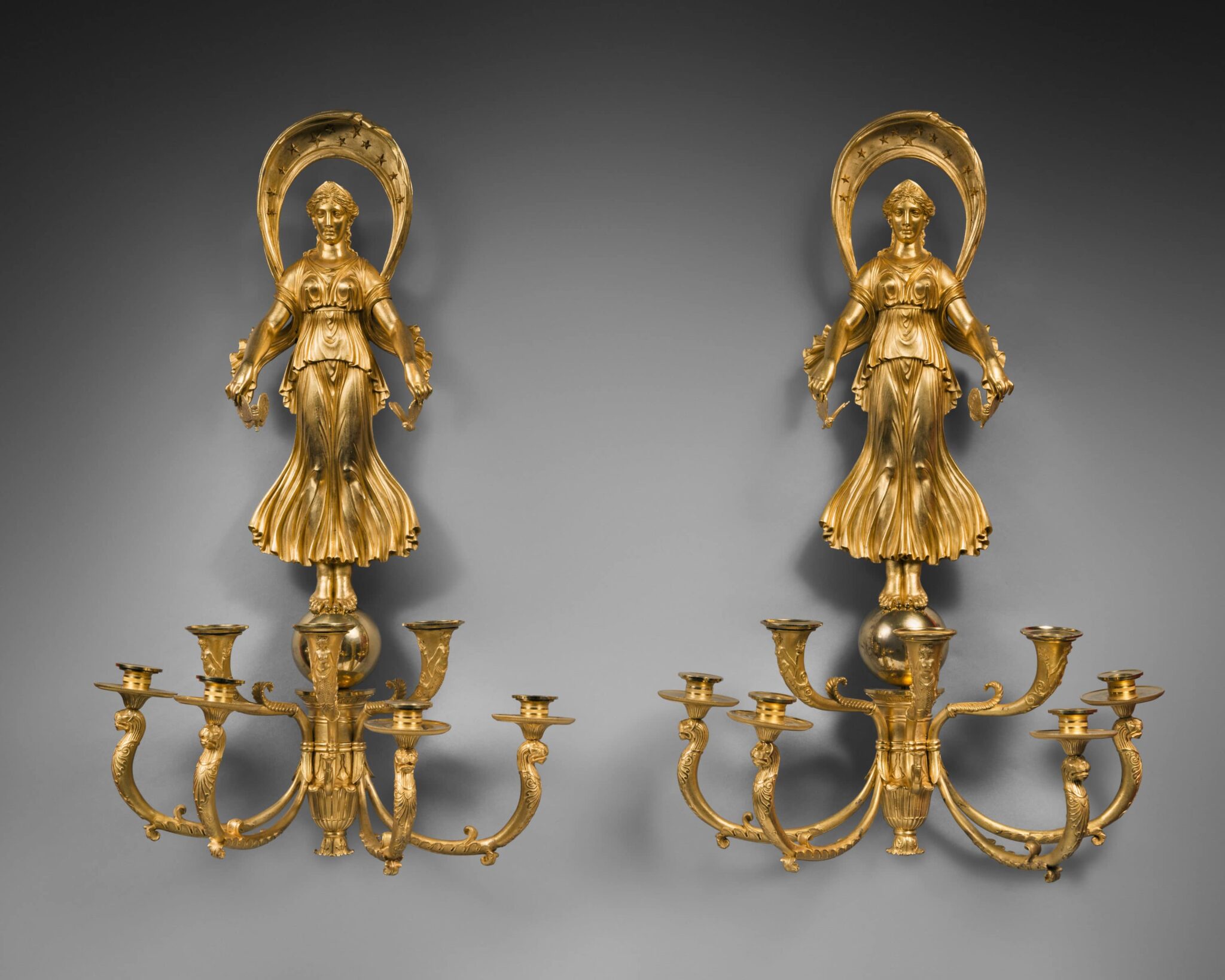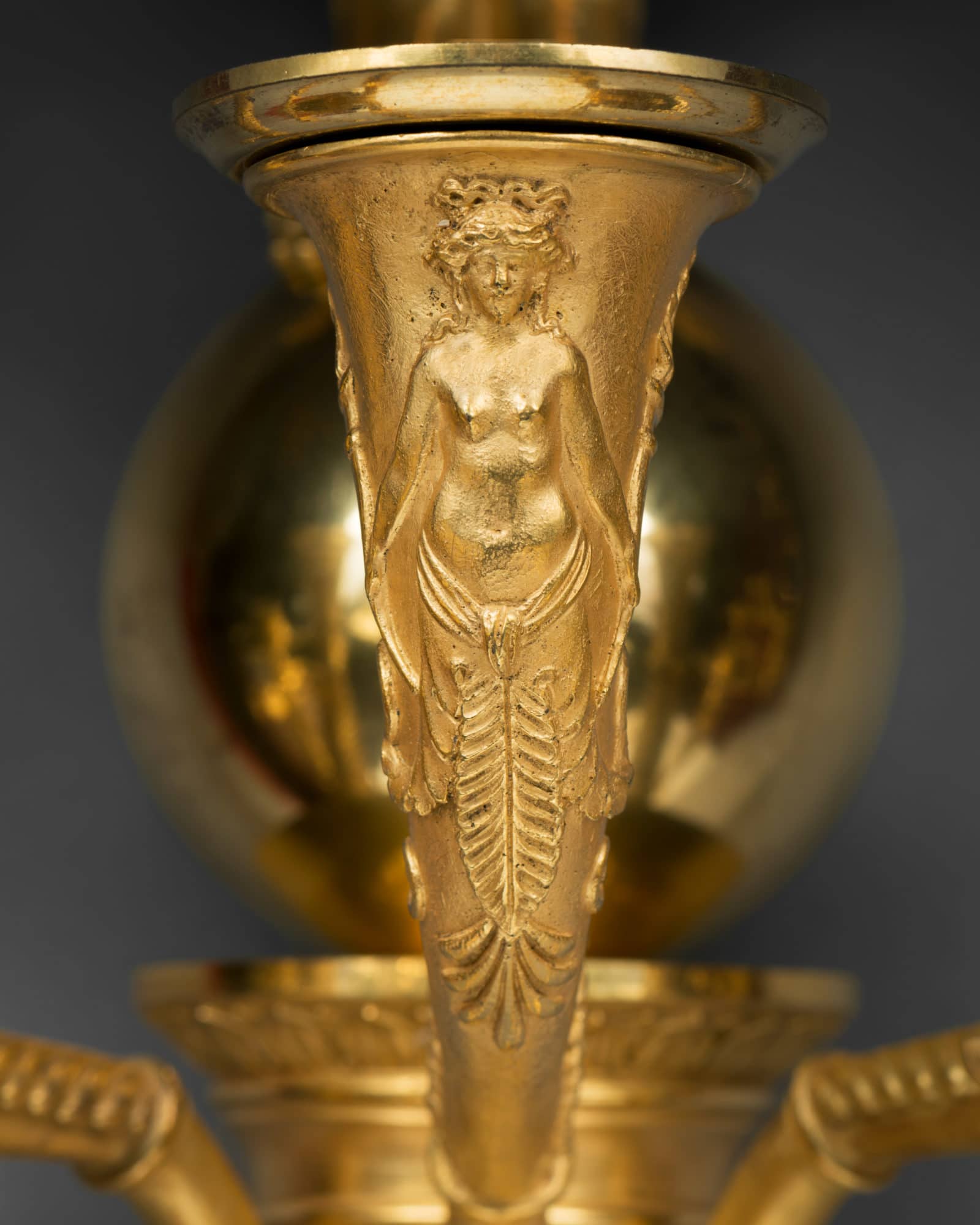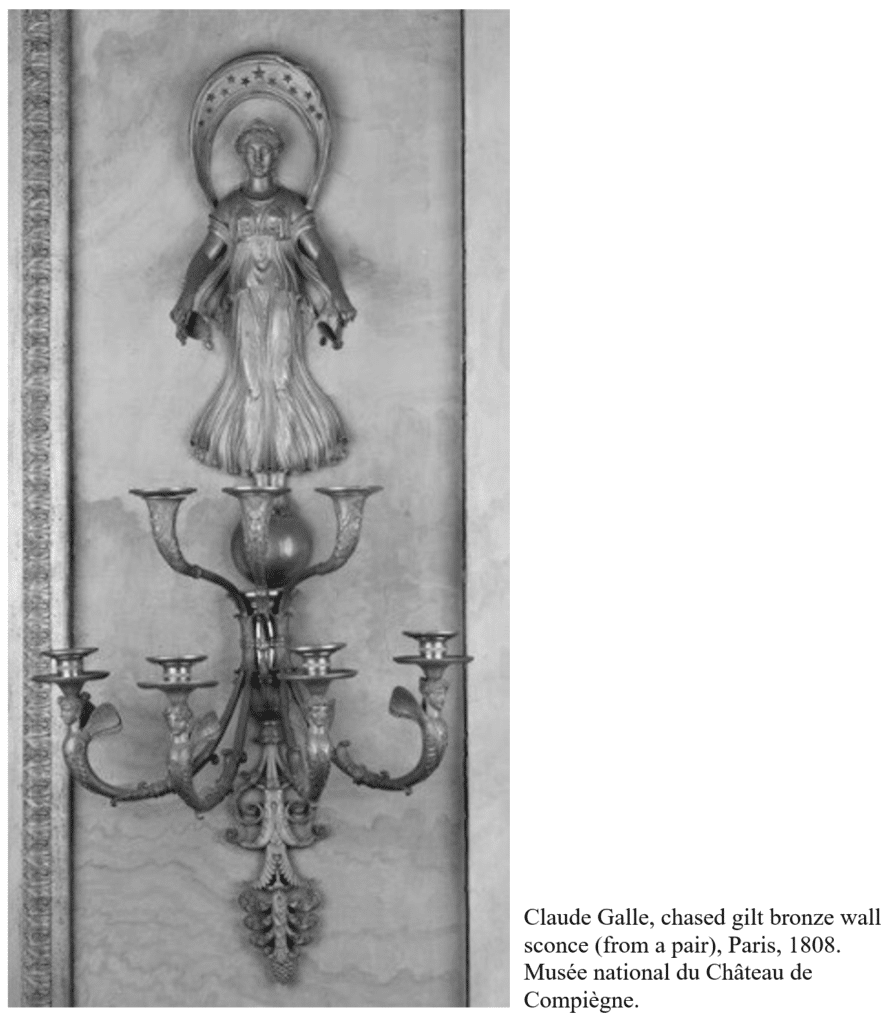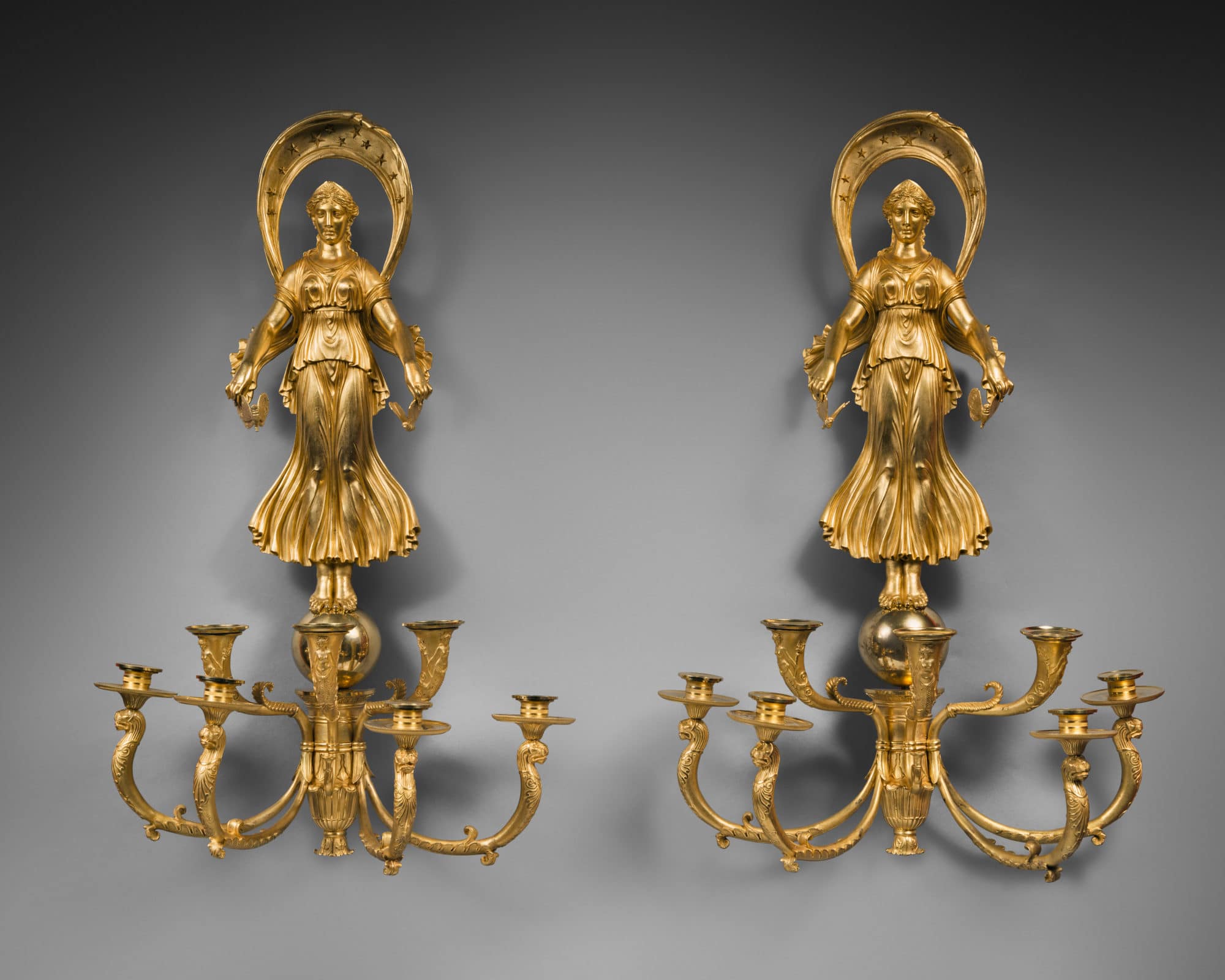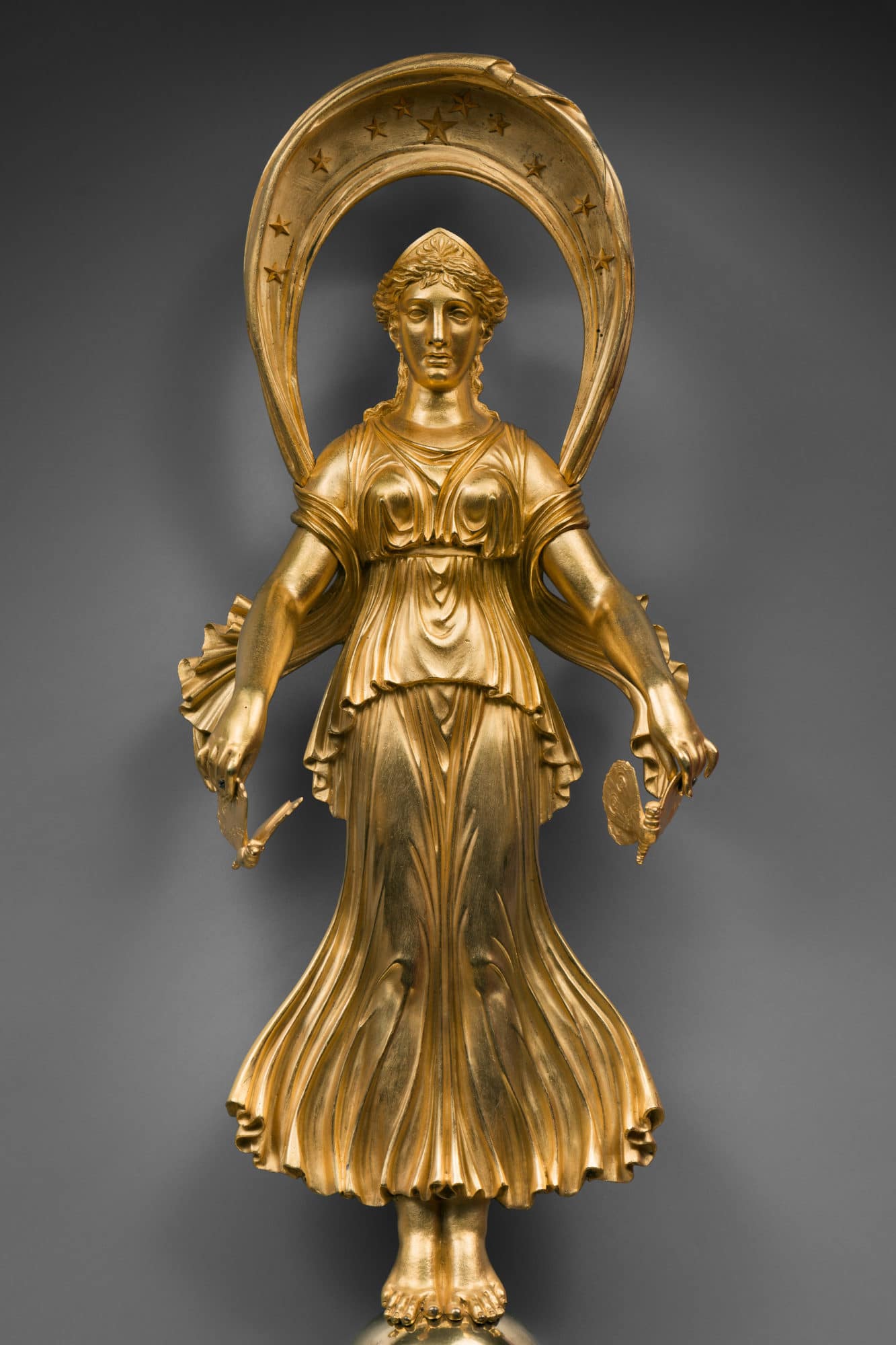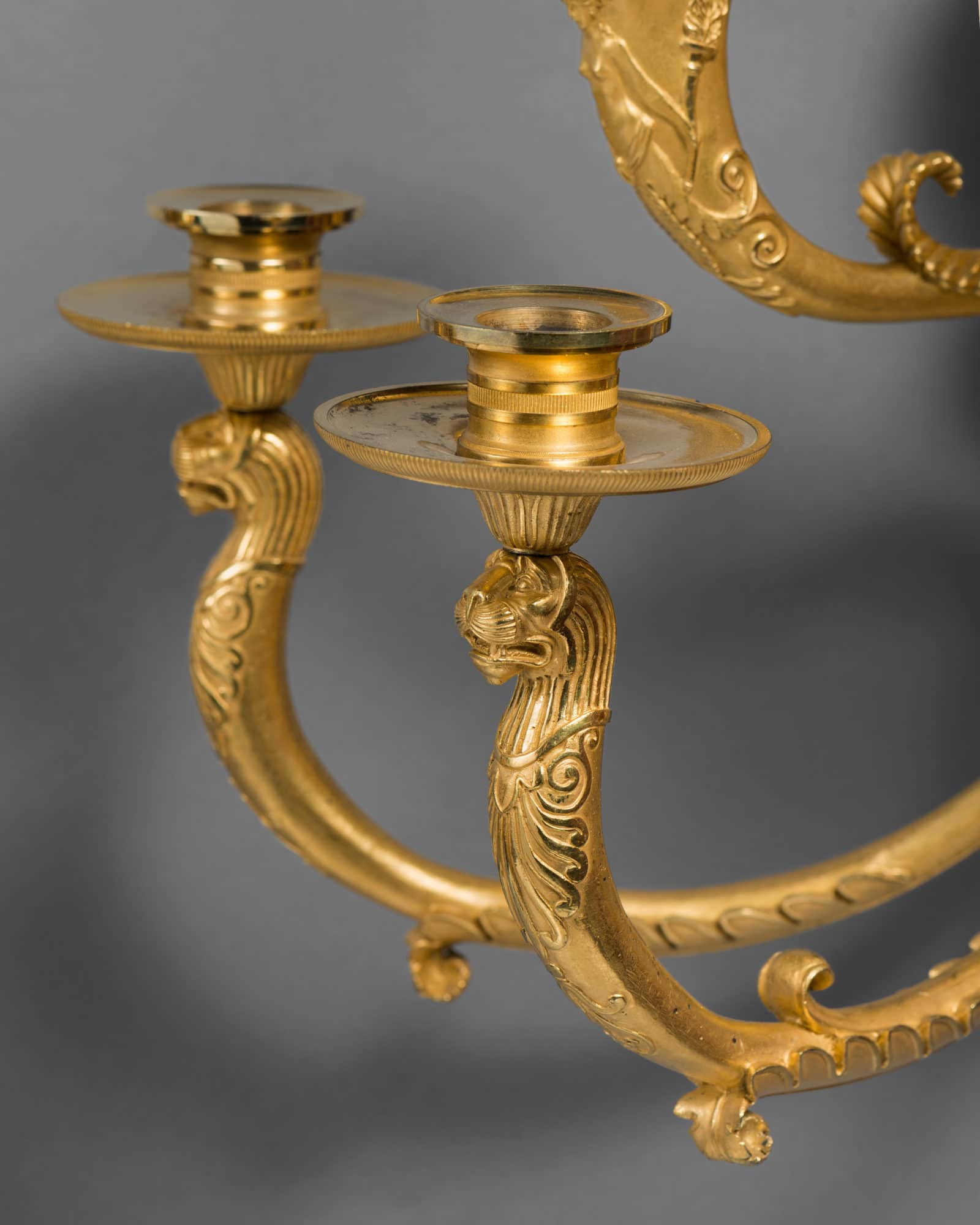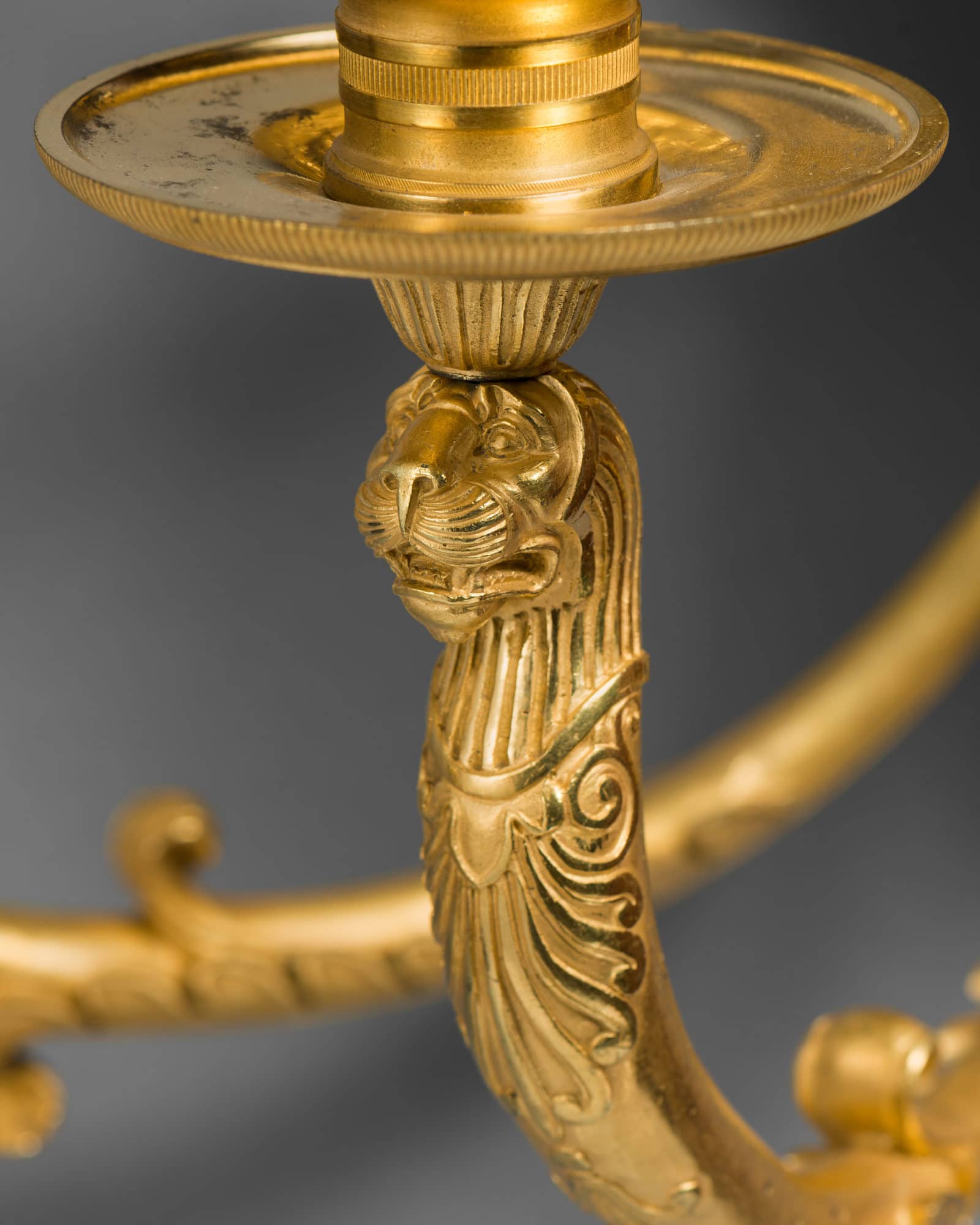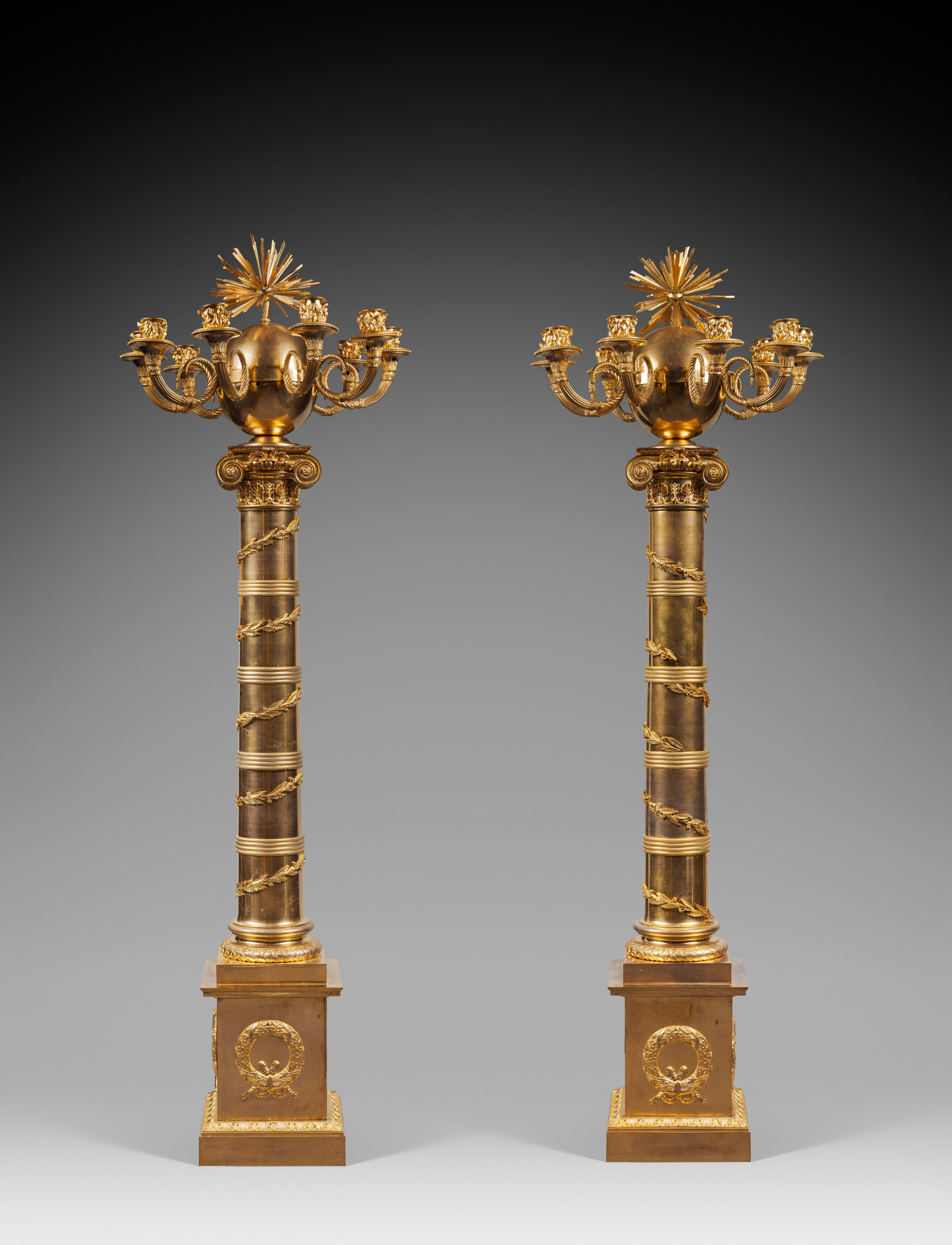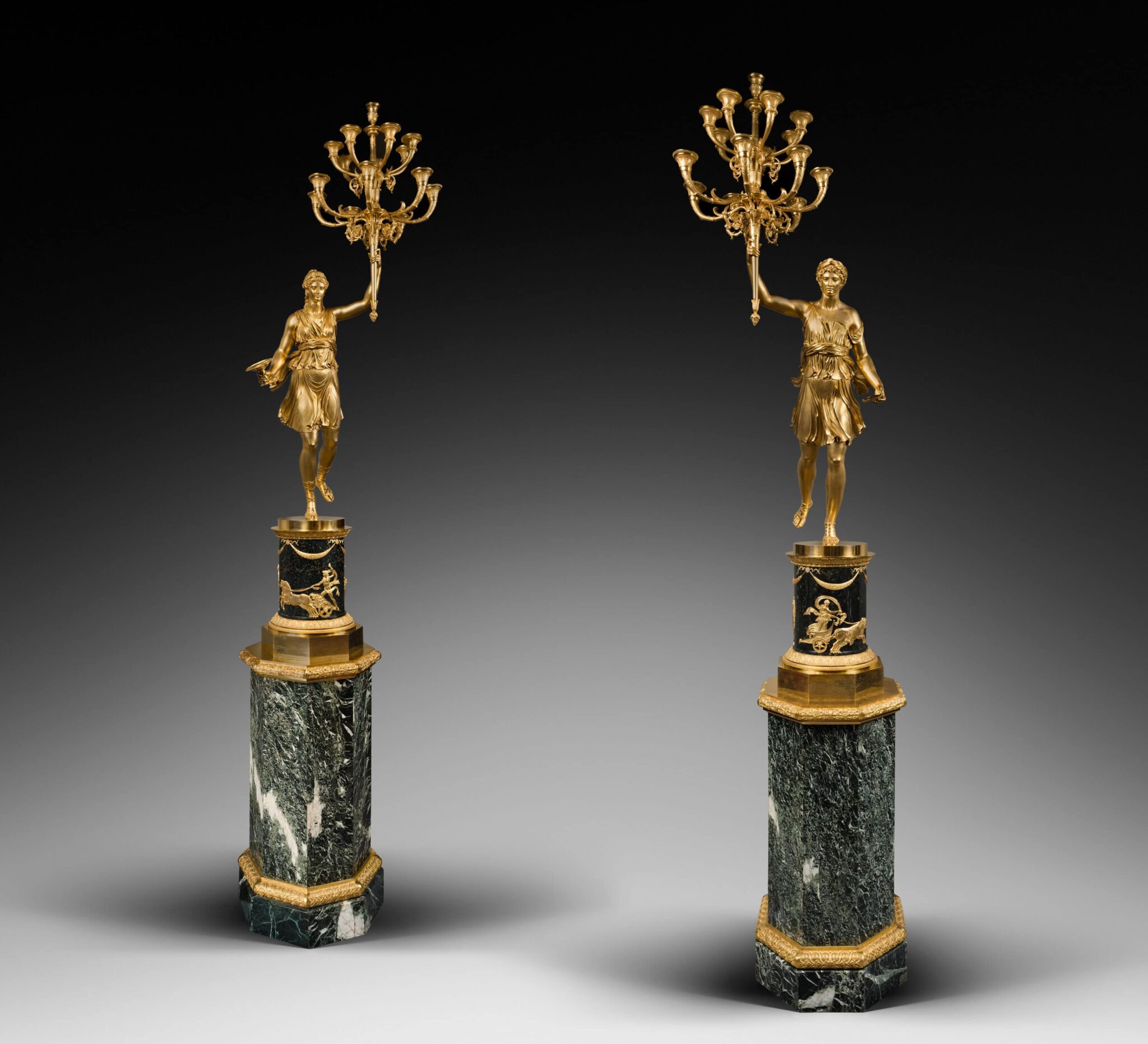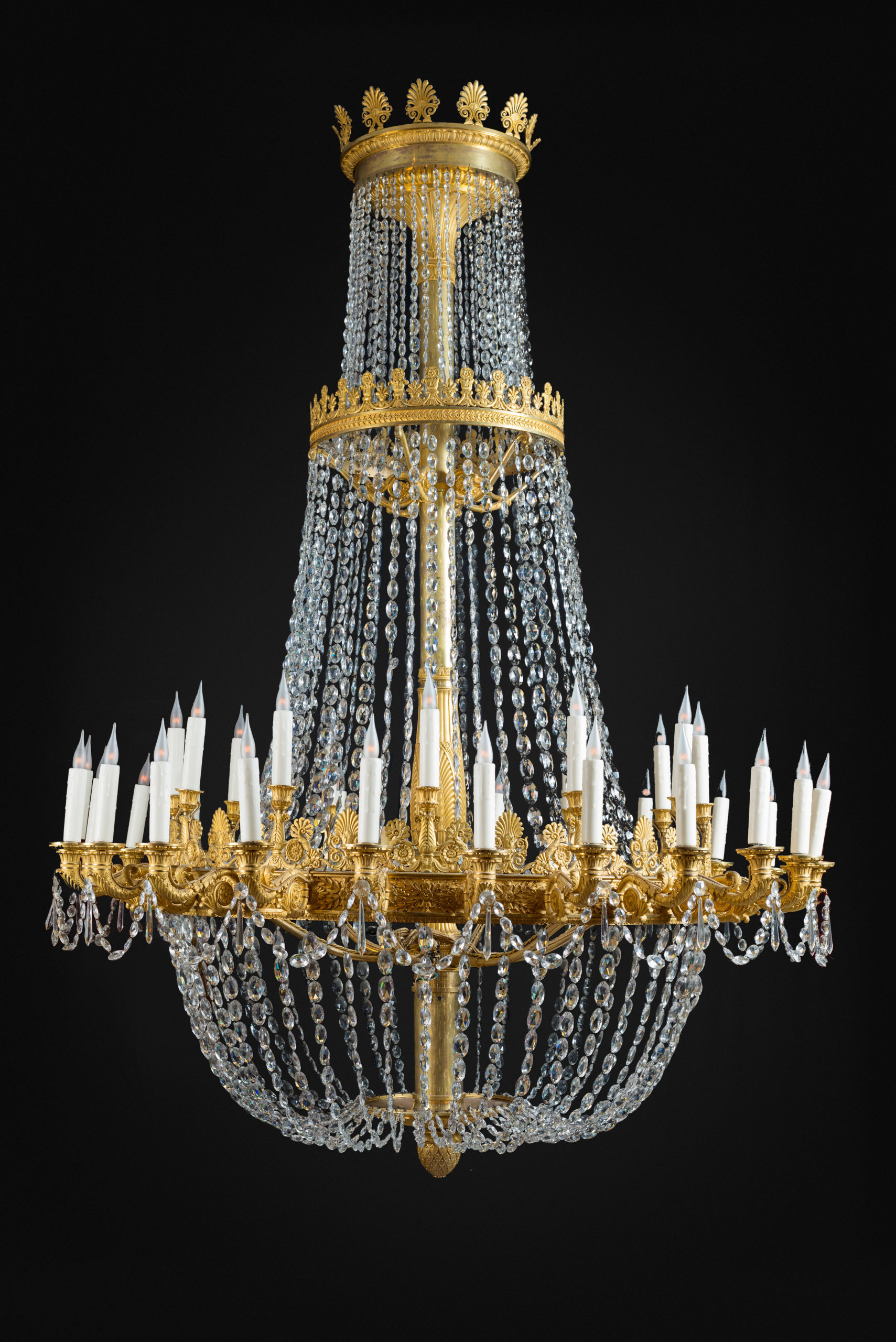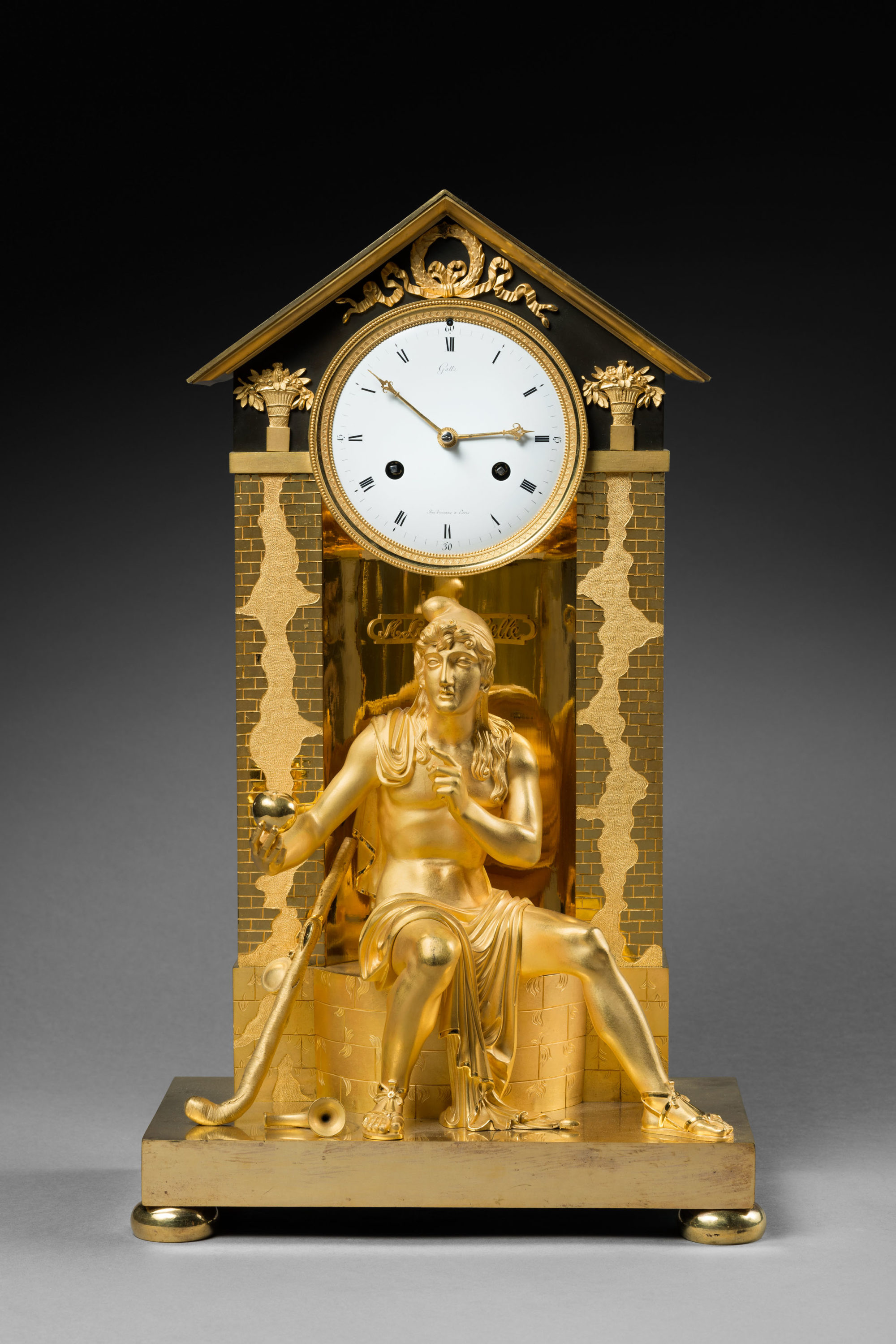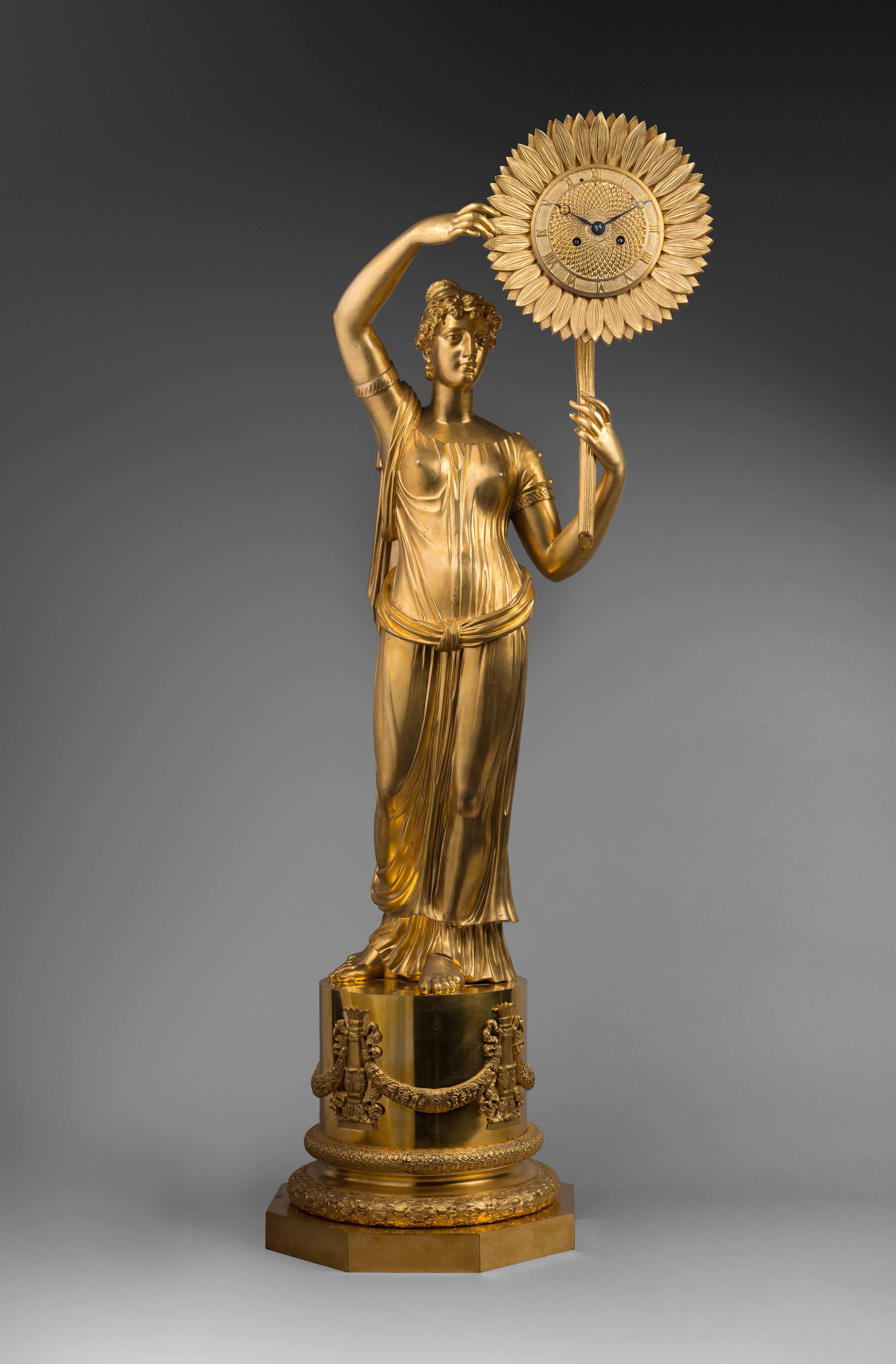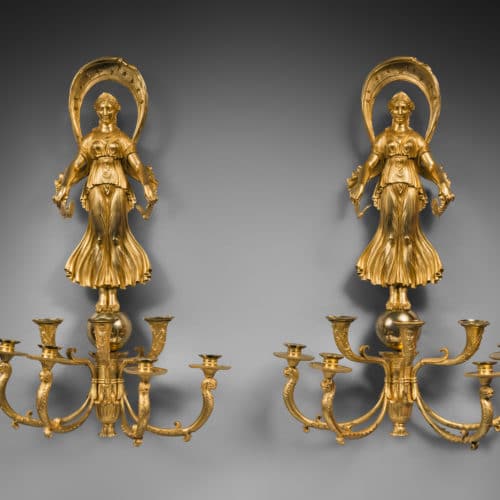Important Pair of Seven-Light Wall Sconces In Matte and Burnished Gilt Bronze
“Psyche and Cupid”
The wall sconces, made of very finely chased gilt bronze with matte and burnished finishing, are in the form of magnificent standing female figures that are dressed in classical tunics with billowing veils. The women hold butterflies in each hand and stand on spheres that are supported on quiver stands that are decorated with gadrooning, acanthus leaves, and scrolling foliage. The seven curving light branches, arranged in two tiers, are attached to the quivers. The three upper branches feature nymphs holding flaming torches, while the lower branches terminate in stylized palmettes with lions’ heads, which support the binets, nozzles, and drip pans with knurled rims.
The present pair of monumental wall sconces stands out due to the extraordinary quality of its gilding and chasing, as well as by its unusual and original design, which is based on the story of Psyche and Cupid. The female figures that are central to the design, holding butterflies and enveloped in veils symbolizing Night, are allegories of Psyche and refer to the story of her love for the young god Cupid.
Very few pieces are known that are comparable in design, or feature similar figures. Among them, a pair of sconces adorned with a Zephyr’s mask, winged horses, and a figure enveloped in a floating veil, is in the Mobilier national à Paris (illustrated in M-F. Dupuy-Baylet, L’heure, Le Feu, La Lumière, Les bronzes du Mobilier national 1800-1870, Editions Faton, Dijon, 2010, p. 100.101). Only one pair of identical wall sconces – but with very minor decorative differences – is known to exist. Delivered in 1808 by bronze caster Claude Galle and destined for the Empress’s Grand Salon de réception in Compiègne Palace, it is still part of the palace’s collections (illustrated in E. Dumonthier, Les bronzes du Mobilier national, Bronzes d’éclairage et chauffage, Librairie générale de l’Architecture et des Arts décoratifs, Editions Charles Massin, Paris, plate 27, and in J-M. Moulin, Guide du Musée national du château de Compiègne, RMN, Paris 1992, p. 73).
Claude Galle (1759 - 1815)
One of the foremost bronziers and fondeur-ciseleurs of the late Louis XVI and Empire periods, Claude Galle was born at Villepreux near Versailles. He served his apprenticeship in Paris under the fondeur Pierre Foy, and in 1784 married Foy’s daughter. In 1786 he became a maitre-fondeur. After the death of his father-in-law in 1788, Galle took over his workshop, soon turning it into one the finest, and employing approximately 400 craftsmen. Galle moved to Quai de la Monnaie (later Quai de l’Unité), and then in 1805 to 60 Rue Vivienne.
The Garde-Meuble de la Couronne, under the direction of sculptor Jean Hauré from 1786-88, entrusted him with many commissions. Galle collaborated with many excellent artisans, including Pierre-Philippe Thomire, and furnished the majority of the furnishing bronzes for the Château de Fontainebleau during the Empire. He received many other Imperial commissions, among them light fittings, figural clock cases, and vases for the palaces of Saint-Cloud, the Trianons, the Tuileries, Compiègne, and Rambouillet. He supplied several Italian palaces, such as Monte Cavallo, Rome and Stupinigi near Turin.
In spite of his success, and due in part to his generous and lavish lifestyle, as well as to the failure of certain of his clients (such as the Prince Joseph Bonaparte) to pay what they owed, Galle often found himself in financial difficulty. Galle’s business was continued by his son after his death by his son, Gérard-Jean Galle (1788-1846). Today his work may be found in the world’s most important museums and collections, those mentioned above, as well as the Musée National du Château de Malmaison, the Musée Marmottan in Paris, the Museo de Reloges at Jerez de la Frontera, the Residenz in Munich, and the Victoria and Albert Museum in London.
Discover our entire collection of rare clocks on La Pendulerie Paris.
